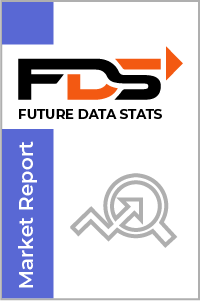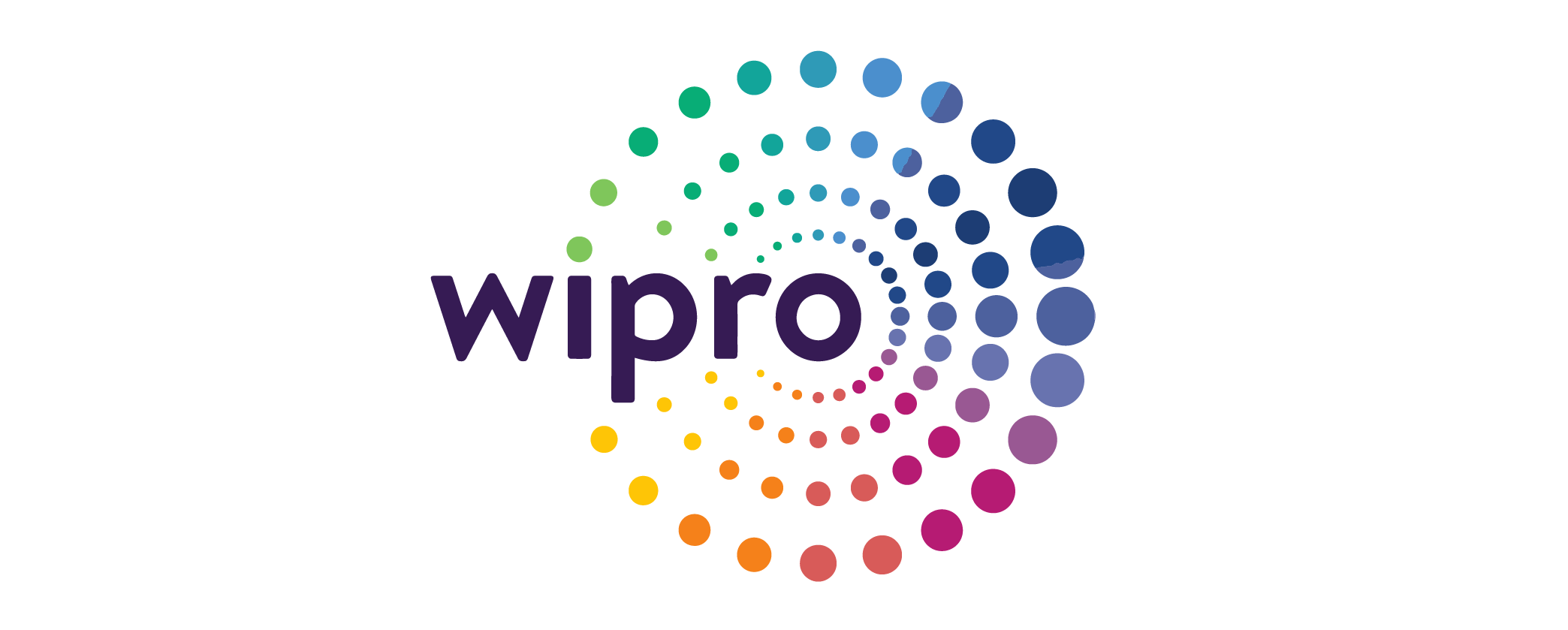The global Smart Forest Monitoring Systems Market size was valued at USD 2.0 Billion in 2024 and is projected to expand at a compound annual growth rate (CAGR) of 20% during the forecast period, reaching a value of USD 6.0 Billion by 2032.
The "Smart Forest Monitoring Systems Market Research Report" from Future Data Stats offers a comprehensive analysis of the Market landscape, leveraging historical data from 2021 to 2023 to highlight significant trends and growth patterns. With 2024 as a baseline year, the report examines consumer behaviors, competitive dynamics, and regulatory influences shaping the industry. Going beyond basic analysis, it provides a well-researched forecast for 2025 to 2033. Utilizing advanced data analysis techniques, the report outlines the Market's growth path, identifies emerging opportunities, and anticipates potential challenges, equipping stakeholders with essential insights to navigate the evolving Market environment effectively.
MARKET OVERVIEW:
Smart Forest Monitoring Systems market exists to provide accurate, real-time data about forest conditions. It helps organizations track changes such as forest fires, illegal logging, and biodiversity loss. By offering timely insights, the market supports better decision-making for forest conservation and sustainable management. This market aims to combine advanced technologies like drones, sensors, and AI to improve forest monitoring efficiency. It empowers governments, researchers, and environmental groups to protect forests, reduce risks, and promote ecological balance. Ultimately, it fosters smarter, data-driven approaches to preserving natural resources.
MARKET DYNAMICS:
Smart Forest Monitoring Systems increasingly use artificial intelligence and machine learning to analyze data faster and with greater accuracy. The integration of drones and wireless sensor networks allows for more detailed and real-time monitoring of remote forest areas. Additionally, satellite remote sensing technology continues to improve, offering higher resolution images that help detect changes like deforestation and forest fires earlier than ever before. These advancements make forest management more proactive and efficient. Looking ahead, the market is set to expand as governments and environmental organizations prioritize climate change mitigation and forest conservation. Businesses will explore combining blockchain with monitoring systems to ensure transparent and tamper-proof data records. The rising demand for sustainable forestry practices opens new opportunities for smart monitoring solutions globally. As technology costs decrease and connectivity improves in remote regions, more stakeholders will adopt these systems, broadening the business scope and driving market growth.
As environmental concerns rise, organizations are turning to advanced technologies to monitor forest health, track biodiversity, and ensure sustainable practices. Cutting-edge tools like remote sensing and IoT devices enable real-time data collection, helping stakeholders make informed decisions. This shift towards data-driven management fosters efficiency and enhances the ability to respond to ecological changes swiftly. However, the market faces several restraints, including high initial costs and the complexity of technology implementation. Many smaller organizations may struggle to adopt these systems due to budget constraints. Despite these challenges, opportunities abound. The growing emphasis on climate change mitigation and biodiversity preservation presents a fertile ground for innovation. Companies that develop cost-effective, user-friendly monitoring solutions can capitalize on this demand, paving the way for broader adoption and transformative impacts in forest conservation efforts.
SMART FOREST MONITORING SYSTEMS MARKET SEGMENTATION ANALYSIS
BY COMPONENT:
Manufacturers and ecosystem developers continue to push the boundaries of hardware innovation in smart forest monitoring systems. They have designed rugged sensors, long-range wireless modules, and solar-powered base stations that function seamlessly across harsh terrains and remote forests. These hardware components offer the structural foundation necessary to collect real-time data on everything from temperature to motion, allowing systems to detect threats or changes with precision. Equipment such as LiDAR units, infrared cameras, and acoustic sensors also play a vital role in establishing a high-resolution understanding of forest conditions, driving demand for more resilient, scalable solutions in forest-rich regions. Meanwhile, software developers have created highly intuitive platforms that translate raw data into actionable insights. They build sophisticated dashboards and visualization tools that allow stakeholders—from rangers to researchers—to interpret trends, respond to alerts, and optimize interventions. These programs often integrate with cloud infrastructure, ensuring uninterrupted access to information even when users operate miles away from the data collection site. Enhancements in AI algorithms and predictive modeling engines have further strengthened the software’s capability to support early warnings and long-term planning strategies. This synergy between robust data processing and user-friendly interfaces has elevated software to a critical status in the forest monitoring ecosystem.
Service providers have stepped in as essential partners, ensuring the smooth implementation, maintenance, and training associated with smart forest systems. Companies and agencies increasingly rely on managed services to ensure uptime, conduct data audits, and provide tailored support. These services extend far beyond installation—they encompass analytics consulting, field support, system upgrades, and even training programs for field personnel. This has created a growing ecosystem where service professionals act as long-term collaborators, helping organizations meet sustainability goals and regulatory mandates with technical and operational confidence.
BY TECHNOLOGY:
Remote sensing technologies have dramatically expanded how experts observe and understand forest ecosystems. Satellites, multispectral imaging, and thermal scanning enable continuous surveillance over vast areas, capturing key indicators like canopy health, moisture levels, and fire risks. These tools operate from a distance but deliver local-level precision, allowing agencies to identify threats before they escalate. With high-frequency imaging and machine-readable formats, remote sensing systems provide the aerial backbone of forest monitoring strategies around the world. Geographic Information Systems (GIS) and GPS technologies offer geospatial clarity that helps stakeholders pinpoint activity, change, or risk zones with meter-level accuracy. GIS platforms organize layered datasets that highlight historical trends, vegetation patterns, and human encroachment. GPS, on the other hand, guides both automated devices and human teams through dense forests, improving data collection, patrolling efficiency, and resource allocation. Together, these technologies create a real-time, geo-aware framework that enables intelligent, location-based decision-making at scale.
Drones and wireless sensor networks (WSNs) have transformed forest monitoring from reactive to proactive. Drone fleets, equipped with advanced imaging tools, now patrol forests independently, surveying inaccessible zones or capturing thermal data during emergencies. Ground-based WSNs complement this by collecting real-time metrics on microclimatic conditions, species movements, and soil quality. When integrated with artificial intelligence and machine learning algorithms, the entire system becomes smarter. AI models learn from patterns in the data, identifying anomalies or predicting events such as forest fires or illegal logging attempts. These combined technologies work in harmony to offer unparalleled situational awareness and ecological intelligence.
BY APPLICATION:
Forest fire detection has become a cornerstone of smart monitoring, with sensor grids, thermal imaging, and satellite feeds now enabling the rapid identification of high-temperature anomalies. Automated systems can instantly flag smoke trails or combustion signatures, prompting authorities to take pre-emptive action. This has helped reduce response time drastically, minimizing damage and protecting both human and ecological assets. Integrated data from cameras, drones, and satellites ensures a 360-degree view of fire-prone areas, even in low-visibility or night-time conditions. Wildlife monitoring and biodiversity tracking rely heavily on acoustic sensors, motion-triggered cameras, and aerial footage to observe animal behavior and migration without human interference. Conservationists use this data to study rare species, understand breeding patterns, and detect disruptions caused by development or poaching. These systems allow for large-scale surveillance while preserving the natural behavior of wildlife. At the same time, data analytics platforms process millions of sensor interactions to uncover biodiversity shifts, flagging potential concerns like population declines or invasive species presence.
In efforts to track deforestation and illegal logging, governments and organizations use smart monitoring systems to catch violations in near-real time. Satellite imaging and AI models compare forest cover changes weekly, even daily, to identify illegal land use or timber extraction. Ground-level sensors complement this by detecting vehicle movements, chainsaw noise, or other illicit activity signatures. Carbon stock and forest health monitoring also play a pivotal role in climate action initiatives. These applications measure carbon absorption rates, assess tree canopy density, and monitor plant stress levels. By combining data across sources, stakeholders can estimate carbon credits, support reforestation projects, and meet international environmental targets.
BY END-USER:
Government agencies have embraced smart forest monitoring systems as part of national conservation and disaster prevention strategies. They deploy vast networks of sensors, satellites, and AI tools to enforce environmental regulations, detect deforestation, and respond to natural disasters like fires or floods. These systems help agencies maintain protected areas, optimize forest patrols, and collaborate with other stakeholders through shared data platforms. By integrating these technologies into public policy frameworks, governments are enhancing transparency, accountability, and rapid response capabilities in forest management. Environmental organizations use smart monitoring to strengthen advocacy and ground-level action. They collect high-resolution data to back policy recommendations, measure the impact of conservation projects, and rally public support with compelling visual evidence. These tools have empowered organizations to move beyond traditional surveys and manual tracking, offering them real-time dashboards that visualize biodiversity, habitat integrity, or illegal encroachments. With more accurate data at hand, these groups can better prioritize interventions and demonstrate success in preserving ecosystems.
Academic and commercial users—such as research institutions and forestry companies—bring scientific rigor and operational scale to smart forest monitoring. Researchers deploy these systems for long-term ecological studies, developing new insights into climate dynamics, species interaction, and forest regeneration. Commercial forestry operations, on the other hand, use monitoring systems to balance profit and sustainability. They track timber growth, reduce environmental impact, and verify compliance with global forestry standards. NGOs and conservation groups often act as intermediaries, working across communities, governments, and donors to implement these systems where they’re needed most. Their grassroots knowledge and access make them ideal facilitators in the global push for smarter, more sustainable forest stewardship.
REGIONAL ANALYSIS:
North America leads the Smart Forest Monitoring Systems market by investing heavily in advanced technologies like drones, AI, and satellite imaging to manage vast forested areas. Government agencies and private companies actively adopt these systems to enhance wildfire detection and forest conservation efforts. Europe follows closely, driven by strict environmental regulations and strong support for sustainable forest management. The region focuses on integrating Geographic Information Systems (GIS) and remote sensing technologies to monitor illegal logging and preserve biodiversity.
In the Asia Pacific, rapid industrialization and deforestation concerns push countries to adopt smart monitoring solutions, with increasing use of IoT devices and drone surveillance. Latin America emphasizes biodiversity protection and combats illegal logging through community-based monitoring and satellite technology. Meanwhile, the Middle East and Africa face infrastructure challenges but show growing interest in low-cost sensor networks and remote sensing to monitor desertification and forest health. Each region tailors its approach based on local priorities, fueling overall market growth worldwide.
MERGERS & ACQUISITIONS:
- In Feb 2024: GreenForest Technologies acquired TreeSense Analytics to expand its IoT-based forest monitoring solutions.
- In Mar 2024: EcoWatch Systems partnered with Satellify to integrate satellite data into its smart forest monitoring platform.
- In Apr 2024: ForestGuard Inc. secured $20M in funding to develop advanced drone-based forest surveillance technology.
- In May 2024: WildTech Solutions merged with CanopyAI to strengthen its predictive analytics for deforestation tracking.
- In Jun 2024: TerraGreen Innovations introduced a real-time forest health monitoring system using edge computing.
- In Jul 2024: ArborMetrics acquired ForestData Labs to enhance its big data capabilities in forest management.
- In Aug 2024: SilviaTech partnered with ClimateSat to deploy AI-driven carbon sequestration tracking in forests.
- In Sep 2024: Verdant Robotics launched a new sensor network for automated forest biodiversity assessment.
- In Oct 2024: GreenSight Analytics was acquired by EarthOptics to integrate forest monitoring with soil health analysis.
- In Nov 2024: ForestMind collaborated with NASA to use satellite imagery for global deforestation alerts.
- In Dec 2024: CanopyVision raised $15M in Series B funding to scale its AI-based forest fire prediction system.
KEY MARKET PLAYERS:
- SilviaTech
- GreenForest Technologies
- EcoWatch Systems
- ForestGuard Inc.
- WildTech Solutions
- CanopyAI
- TerraGreen Innovations
- ArborMetrics
- ForestData Labs
- Verdant Robotics
- GreenSight Analytics
- EarthOptics
- ForestMind
- CanopyVision
- TreeSense Analytics
- Satellify
- ClimateSat
- ArborVision
- BioForest Labs
- NaturaSense
Smart Forest Monitoring Systems Market: Table of Contents
Introduction
Market Overview
Market Segmentation
- By Component
- By Technology
- By Application
- By End-User
- By Geography
Market Dynamics
- Drivers
- Restraints
- Opportunities
Competitive Landscape
Company Profiles
Market Forecast & Trends
Conclusion
Smart Forest Monitoring Systems Market Segmentation
By Component:
- Hardware
- Software
- Services
By Technology:
- Remote Sensing
- Geographic Information System (GIS)
- Global Positioning System (GPS)
- Drones and UAVs
- Wireless Sensor Networks (WSN)
- Artificial Intelligence (AI) & Machine Learning (ML)
By Application:
- Forest Fire Detection
- Wildlife Monitoring
- Deforestation Monitoring
- Illegal Logging Detection
- Carbon Stock Monitoring
- Forest Health Monitoring
- Biodiversity Monitoring
By End-User:
- Government Agencies
- Environmental Organizations
- Research Institutions
- Commercial Forestry Companies
- NGOs and Conservation Groups
By Geography:
- North America (USA, Canada, Mexico)
- Europe (UK, Germany, France, Italy, Spain, Rest of Europe)
- Asia-Pacific (China, Japan, Australia, South Korea, India, Rest of Asia-Pacific)
- South America (Brazil, Argentina, Rest of South America)
- Middle East and Africa (GCC Countries, South Africa, Rest of MEA)
Why You Should Invest in a Market Research Report
Smarter Business Decisions:
Investing in a high-quality market research report equips you with invaluable insights into industry trends, customer preferences, and competitor strategies. With solid data guiding your decisions, you can minimize risks and confidently explore new opportunities—whether launching a product or expanding into new markets.
Spot Hidden Opportunities:
Market research uncovers unmet customer needs and emerging trends before they hit the mainstream. By aligning your offerings with these insights, you can stay ahead of the competition and tap into previously untapped demand.
Know Your Competition Inside Out:
Gain a comprehensive understanding of your competitors' strengths, weaknesses, and strategies. This knowledge allows you to refine your unique selling points, enhance your positioning, and effectively outmaneuver your rivals.
Sharper, More Effective Marketing:
Understanding your audience is essential for successful marketing. Market research reveals who your customers are, what drives their decisions, and how they interact with brands. Armed with these insights, you can craft tailored campaigns that yield better results and higher ROI.
Reduce Risks Before They Arise:
Every business decision carries risks, but market research helps you anticipate challenges before they escalate. By analyzing market conditions and potential obstacles, you can make proactive adjustments to safeguard your bottom line and reputation.
Strengthen Your Case for Funding:
Investors and lenders seek proof of market potential before committing to your business. A well-researched report provides the data-driven evidence they need, boosting your credibility and enhancing your chances of securing capital.
Stay Ahead of Industry Shifts:
Markets evolve rapidly, influenced by new technologies, regulations, and changing consumer behaviors. Regular market research keeps you informed, enabling you to adapt quickly and maintain a competitive edge in your industry.
RESEARCH METHODOLOGY AT FUTURE DATA STATS
At Future Data Stats, we merge decades of industry expertise with innovative research techniques, delivering unparalleled market intelligence. Our seasoned analysts employ a dynamic, data-driven approach to uncover actionable insights, empowering businesses to navigate complex market landscapes with confidence.
Comprehensive & Cutting-Edge Market Analysis:
We delve deeper than surface-level trends, offering a holistic view of market dynamics. Our research methodology is designed to:
- Accurately assess market size, growth patterns, and competitive landscapes.
- Identify emerging opportunities through real-time trend analysis and predictive modeling.
- Validate findings with high-quality data, expert consultations, and independent verification.
Our insights equip decision-makers with strategic clarity, ensuring they remain ahead in rapidly evolving industries.
Multi-Source Data Collection & Validation:
We utilize a diverse mix of primary and secondary research sources, including:
- In-depth stakeholder interviews with industry leaders, suppliers, distributors, and end-users.
- Statistical databases & market reports from authoritative global sources.
- Regional market intelligence to capture localized trends and demand shifts.
- Proprietary analytical models tailored to specific industry needs.
By cross-verifying data from multiple streams, we ensure maximum accuracy and reliability.
Key Advantages of Our Research Approach:
- Actionable Intelligence: Clear, data-backed recommendations for strategic planning.
- Technology-Enhanced Accuracy: Advanced tools for data validation and trend forecasting.
- Unbiased Insights: Independent analysis free from external influence.
Our Two-Tier Research Framework:
Primary Research – Direct Industry Engagement
- Expert Interviews: Over 25 hours of discussions with key stakeholders across the value chain.
- Targeted Surveys: Structured questionnaires for Key Opinion Leaders (KOLs) to gauge market sentiment.
- Competitive Benchmarking: Assessing leading players to determine market positioning.
Secondary Research – Extensive Data Synthesis
- Analysis of 3,000+ documents, including industry reports, whitepapers, and regulatory publications.
- Global & regional data mining from government databases, trade journals, and financial reports.
- Macroeconomic & sector-specific trend mapping for long-term forecasting.
Dual Analytical Approach:
- We employ both top-down and bottom-up methodologies to ensure precision:
- Bottom-Up Analysis: Calculating market size from granular data for detailed accuracy.
- Top-Down Assessment: Validating findings through macroeconomic indicators and industry benchmarks.
Why Choose Future Data Stats?
- 70+ years of collective expertise in market intelligence.
- Customized research models for sector-specific accuracy.
- Transparent, reliable, and forward-thinking insights.
With Future Data Stats, you don’t just receive data—you gain a strategic advantage. Partner with us to unlock the full potential of your market decisions.
Smart Forest Monitoring Systems Market Dynamic Factors
Drivers:
- Governments increase forest conservation efforts worldwide.
- Rising forest fires push adoption of early detection technologies.
- Growing awareness about climate change fuels monitoring demand.
- Advances in drone and sensor technology improve data accuracy.
- Expansion of IoT enables real-time forest monitoring.
Restraints:
- High installation and maintenance costs limit adoption in some areas.
- Lack of skilled professionals slows technology deployment.
- Poor network connectivity hinders remote forest monitoring.
- Data privacy and security concerns affect system implementation.
- Resistance from traditional forestry sectors delays modernization.
Opportunities:
- Integration of AI to enhance predictive analytics and alerts.
- Increasing use of satellite imaging for large-scale monitoring.
- Collaboration between governments and private players for funding.
- Expanding applications in biodiversity and wildlife protection.
- Growing demand for sustainable forest management practices.
Challenges:
- Managing and analyzing large volumes of collected data effectively.
- Ensuring interoperability among diverse monitoring technologies.
- Addressing environmental factors that affect sensor durability.
- Balancing cost with scalability for wide forest coverage.
- Overcoming regulatory and policy hurdles across regions.
Smart Forest Monitoring Systems Market Regional Key Trends Analysis
North America:
- Adoption of AI-driven monitoring solutions accelerates.
- Government grants boost remote sensing projects.
- Increasing use of drones for wildfire management.
Europe:
- Strong policies support forest carbon stock monitoring.
- Integration of GIS with smart systems gains momentum.
- Focus on illegal logging detection rises sharply.
Asia Pacific:
- Rapid growth in IoT-enabled forest monitoring devices.
- Expansion of public-private partnerships for forestry tech.
- Rising investments in deforestation tracking technologies.
Latin America:
- Emphasis on biodiversity monitoring increases.
- Growth in community-based forest monitoring initiatives.
- Satellite-based surveillance expands coverage areas.
Middle East & Africa:
- Use of remote sensing for desertification control rises.
- Limited infrastructure drives innovation in low-cost sensors.
- Focus on wildfire early warning systems strengthens.
Frequently Asked Questions

















